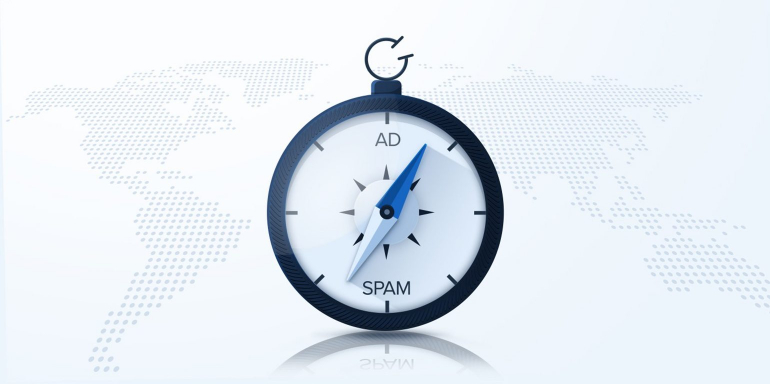We have bad news for you.
“Approximately 96% of visitors that come to your website are not ready to buy.” (Marketo)
This means that 96% of visitors that you spent time and money to get to your website leave without doing anything. There’s no click on a button, no filling out a form and no conversion.
That’s a conversion dead end, right?
Not exactly.
Here’s some good news.
According to a comScore study, retargeted ads cause a 726% lift in site visitation after four weeks. What’s even better is that retargeting can increase conversion rates by 147%.”
Retargeting (a.k.a. remarketing) ensures that there’s no conversion flat line when a visitor leaves your website. The marketing practice makes sure that even after leaving your website, your visitors don’t forget your value proposition and click to get it when the time is right for them.
Although remarketing has become fairly common with more than 70% of digital marketers setting aside portions of their budgets for retargeting — according to a Qualtrics survey — the practice still lacks a key ingredient.
This post will give you a full account of what retargeting is and what it can do for your conversion rates. We’ll go into detail about the missing ingredient you need to add to your campaigns. We’ll also showcase real world examples of retargeting campaigns done right and campaigns gone rogue.
What is retargeting?
You know how sometimes you get the feeling that certain ads are stalking you? All you did was search for a pair of hiking boots a few weeks ago and since then it feels like whichever website you’re on, you see the same pair of boots staring at you, subconsciously screaming, “buy me, buy me!”
That ad is a remarketing ad, and the subconscious voice you repeatedly hear is what these campaigns are created to achieve:
Call back a visitor who’s gone astray.
Because, you see, a buyer’s journey is no longer linear:
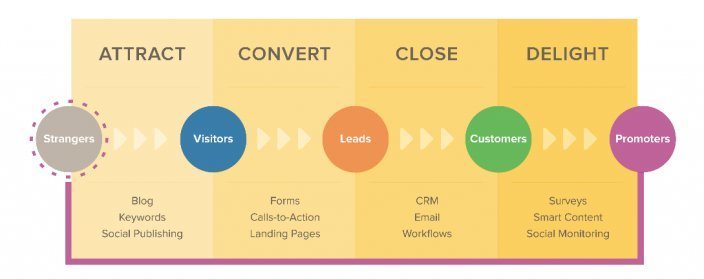
It looks more like this:
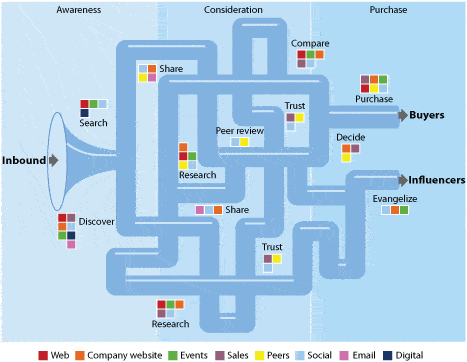
Remarketing helps you keep your brand in front of your potential customers’ eyes even after they have steered away from your website — persuading them to revisit your offer when they need it later.
How does retargeting work?
Here’s a visual by Retargeter that explains how remarketing works:
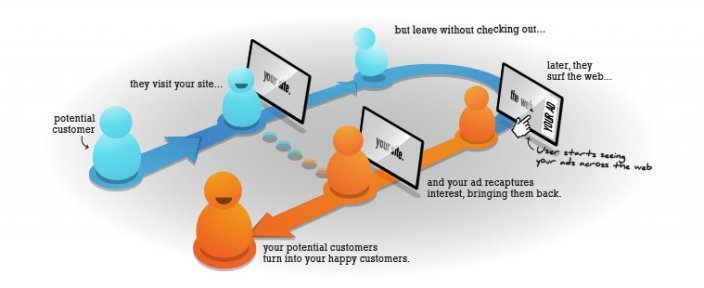
The campaigns have two main types:
- Pixel-based retargeting
- List-based retargeting
Pixel-based retargeting is the most common. It works with the help of an unassuming JavaScript code (referred to as a pixel) that gets placed on your website or post-click landing page. After the pixel is attached, every time a visitor comes to your website or post-click landing page, the pixel drops an anonymous browser cookie.
At that point, when the visitor exits your page and browses other websites the pixel lets your provider (whether you’re using Google retargeting or a social network) know that these visitors need to start seeing your ads.
The pixel-based retargeting guarantees that your ads get seen by people who’ve either looked through your website or landed on your post-click landing page. Another advantage with pixel-based retargeting is that it is timely, visitors can immediately begin seeing ads that can nudge them back to your offer.
List-based retargeting, on the other hand, involves using lists of your existing customers to retarget specific ads at them. Maybe you want your blog subscribers to download an ebook whose pop-up ad they have been ignoring on your blog, or you want your free trial users to upgrade to a paid plan.
To get started with list-based retargeting, simply upload the list of email contacts you have on your retargeting platform (usually a social network like Facebook or Twitter). The social network then serves people with those email addresses with the ads you’ve created for your campaign.
The drawback with this method is that sometimes visitors use different email addresses for social networks and other online activities. According to MediaMath, the number of synced visitors can vary from 70-80% down to a measly 20-30% for some platforms. And if the sync percentage is on the lower side for your campaigns then your ads won’t be seen by a lot of people.
What goals should you set for your retargeting campaigns?
Your campaigns should primarily have two goals:
1. Awareness
You can use awareness campaigns to retarget visitors about your product features and other announcements. This is a less targeted goal because it’s directed at visitors who haven’t interacted a lot with your business. You can run your awareness campaigns as a precursor for your conversion campaigns.
2. Conversion
For conversion campaigns, you want your visitors to recognize what your brand does. However, beyond that, you want them to click on the ad, direct them to a post-click landing page and urges them to convert on a form. In turn, they will transition from being a visitor, to becoming a lead, and then hopefully a customer.
Regardless of your chosen goal, your ads and the pages that follow must be optimized if you want your visitors to re-engage with your brand.
How do I optimize my campaigns?
Most brands have a good idea of how to create a good remarketing ad. We believe, and think you would agree that most retargeting ads are optimized (i.e. they are designed with vibrant colors, include catchy headlines, and enticing images). At least, that is the case with most Google retargeting ads.
Here’s an ad by Clever Zebo as an example:
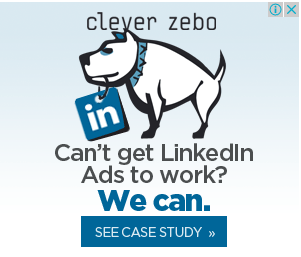
Great looking ad. They even have their mascot biting on a LinkedIn logo making the image relevant to this specific ad. The headline is clear, and it empathizes with the visitor’s problem. Because the ad is so effective, the visitor clicks and this is where they land:
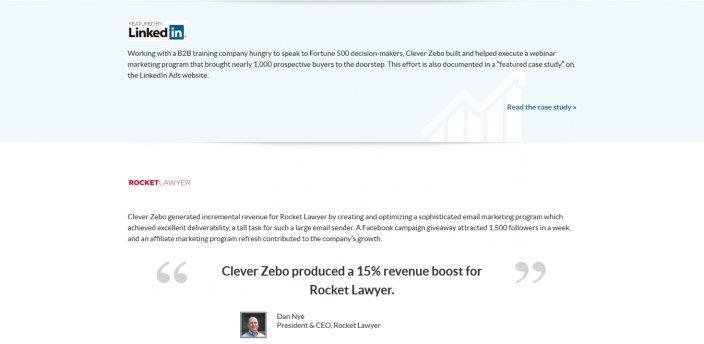
The page above is the service’s website page that includes glowing testimonials from clients who have increased their conversion rates. There’s no proper headline, no call-to-action button — just testimonials.
What will the retargeted visitor do here? They will probably leave confused and disappointed because they didn’t get what they were promised in the ad.
What the Clever Zebo’s retargeting campaign, and many other campaigns like this, lacks are targeted post-click landing pages connected with the ads.
Why do my campaigns need a post-click landing page?
Your retargeting campaigns need a post-click landing page for the same reason your PPC campaigns need post-click landing pages — to maintain message match.
post-click landing pages allow you to eliminate all clutter and distractions from your offer. When a visitor finally decides to re-engage with your brand, he sees exactly what he expected to and not get lost in the lack of message match.
Here’s a retargeting ad from Ray Higdon, a consultant offering free coaching advice to anyone who has a question for him:

Here’s the page you come to when you click the ad:
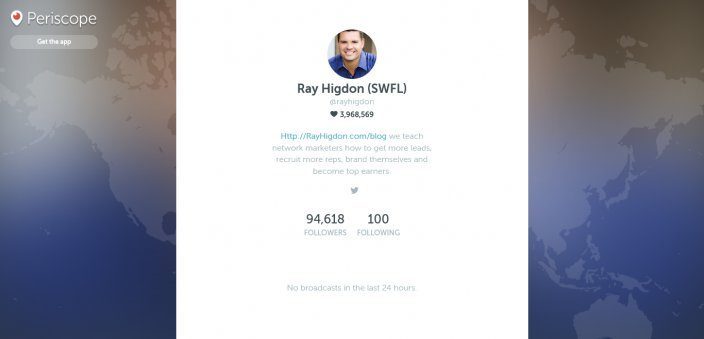
No distractions or mentions of anything else, just an intro of the consultant and the fact that there have been no broadcasts yet, which is not surprising because the ad already tells you that the session starts every Friday. Yes, this is Ray’s Periscope profile page, but it’s an excellent example of a targeted destination page which does exactly what it is supposed to do.
Below is an ad for Slidebean that was following me around on Forbes and YouTube, just because I accidently landed on their website for a brief moment while on my hunt for post-click landing page examples:

The ad simply has a headline, “make the perfect pitch deck.” There’s no mention of any features, no call to action button, or images.
Not a very persuasive ad, but in the name of research and demonstration let’s click anyway. Here’s where we land:

The page is clearly their homepage, and there is too much information on the page for me who was just browsing something else just a moment ago to quickly get acquainted with the service.
A post-click landing page would have performed much better here, because contrary to a homepage, it could just contain the vital information, so the visitor gets to know the brand before he clicks the CTA button.
Remember homepages are cluttered, whereas post-click landing pages are targeted to promote a single offer. On which page do you think your visitors should land when they click a specific ad that you’ve created for a specific purpose?
An optimized post-click landing page of course.
The anatomy of an optimized retargeting post-click landing page
We won’t go into detail about the basics of post-click landing page optimization, but here’s a recap:
post-click landing page optimization is the process by which you convince your visitor to click on your CTA button. You do this by making sure that every post-click landing page element provides your visitors with value.
For your remarketing campaigns, here’s a general breakdown of your post-click landing page elements:
- Your headline must be clear, convincing, empathetic and have a clear connection with your ad
- Your image needs to be relevant and eye catching
- Your CTA button has to be clear and a contrasting color
- Your form shouldn’t ask for too much of visitors
- You should have trust indicators on the page
- Your page should not be cluttered and hopefully has navigation links missing
- Your copy must mention your UVP, and reinforce any claim that your ad makes
Let’s see a few examples now.
Form Analytics
Here’s an ad for Form Analytics:
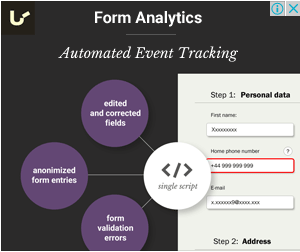
The ad headline says “Automated Event Tracking,” of which I expect the post-click landing page to reiterate. But that’s not the case with its corresponding post-click landing page:
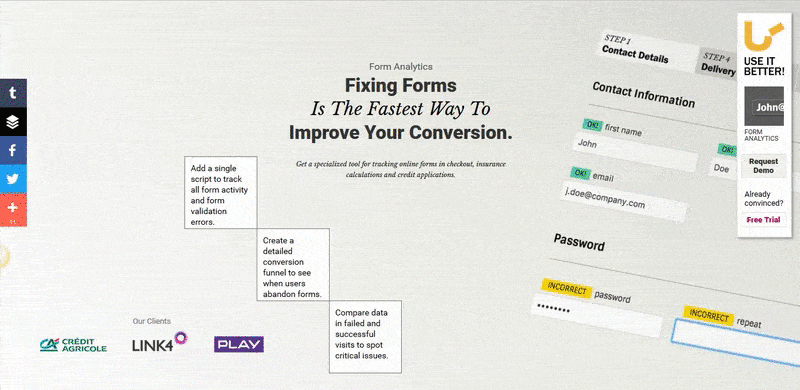
The headline doesn’t repeat what the ad headline promises because there is no mention of event tracking (although as you scroll it is mentioned in the copy). In fact, the graphic on the page is the same one in the ad — that’s message match in some small fashion.
However, where’s the CTA button?
Is this it?

The button is practically hidden. Yes it’s placed on a floating bar, but it’s not contrasting nor is it crystal clear.
Autopilot
Autopilot uses ads to get visitors to sign up for their free trial using an ad like this one:
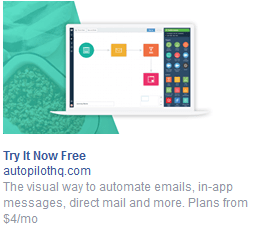
Here’s the post-click landing page you see:
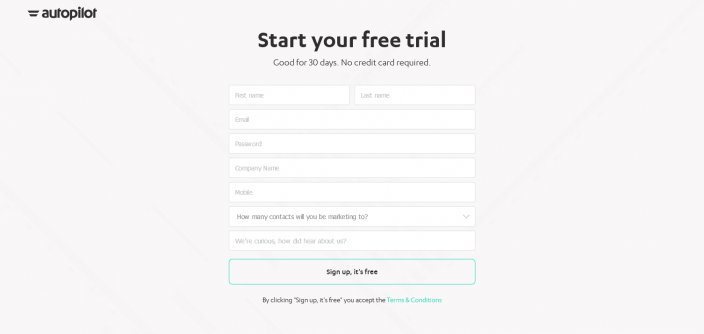
The page has no real headline, just a statement that encourages you to “Start your free trial” followed by a lengthy form. Why would a visitor fill out this huge form without knowing in detail what the service does?
It’s great that the page has an FAQ section but that comes below the fold, below the CTA button, and below the lengthy form:
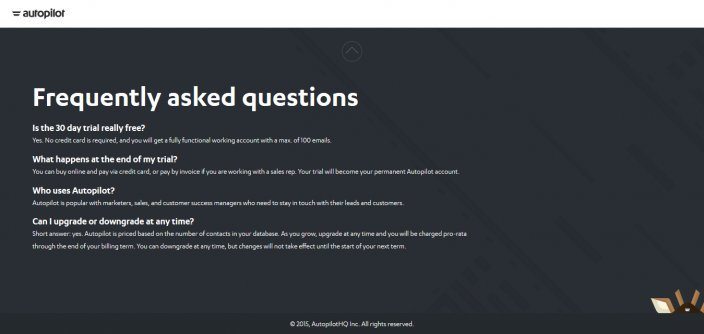
In the end, Autopilot doesn’t fully optimize their retargeting page, which will likely cost them conversions.
Instapage
Instapage uses a bunch of retargeting ads both for awareness and conversion campaigns.
Here is one example:
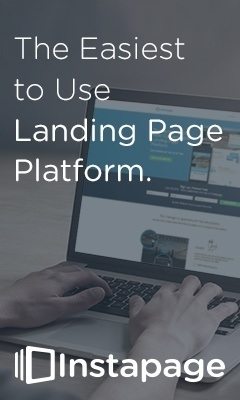
There’s an image of a person browsing the Instapage website, and a headline that claims “The Easiest to Use post-click landing page Platform.”
Here’s the post-click landing page you arrive at:
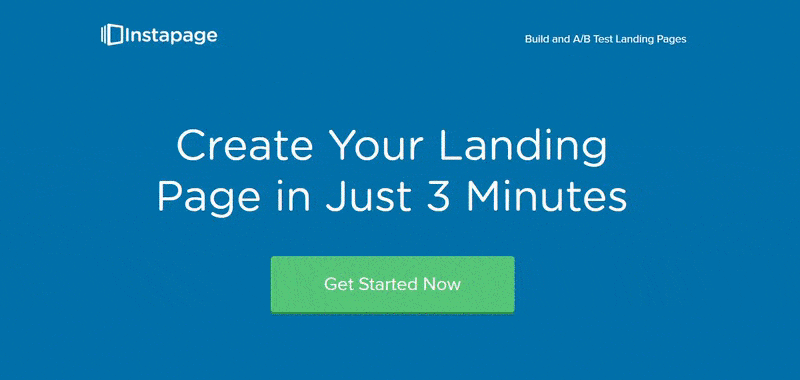
The page headline reiterates the “easiest to use post-click landing page platform” claim by telling visitors that it can take all but 3 minutes to create a post-click landing page. So far things look great optimization-wise.
Humbly speaking, the page is optimized because:
- It includes a relevant video
- The call to action buttons are clear and contrasting
- The copy explains the features as well as testimonials and other trust indicators
And on top of all that, when you click the CTA button, you see the form that only requests basic contact information.
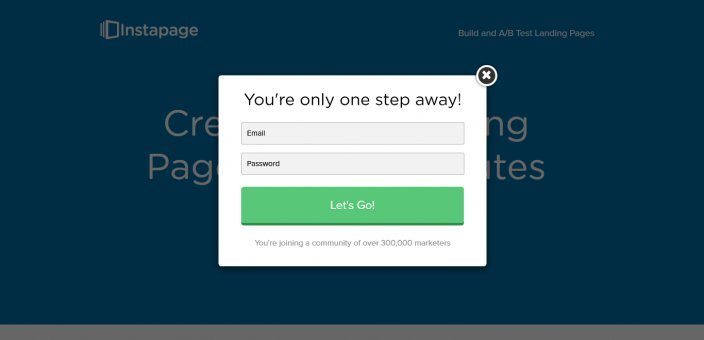
Not to toot our own horn but this is how you optimize your visitor’s retargeting experience.
Conclusion
Retargeting gives you a second chance at increasing your conversions. Don’t waste it by directing visitors to a page that’s not designed for conversions — like a cluttered homepage. Sign up for an Instapage Enterprise demo today.

See the Instapage Enterprise Plan in Action.
Demo includes AdMap™, Personalization, AMP,
Global Blocks, heatmaps & more.
